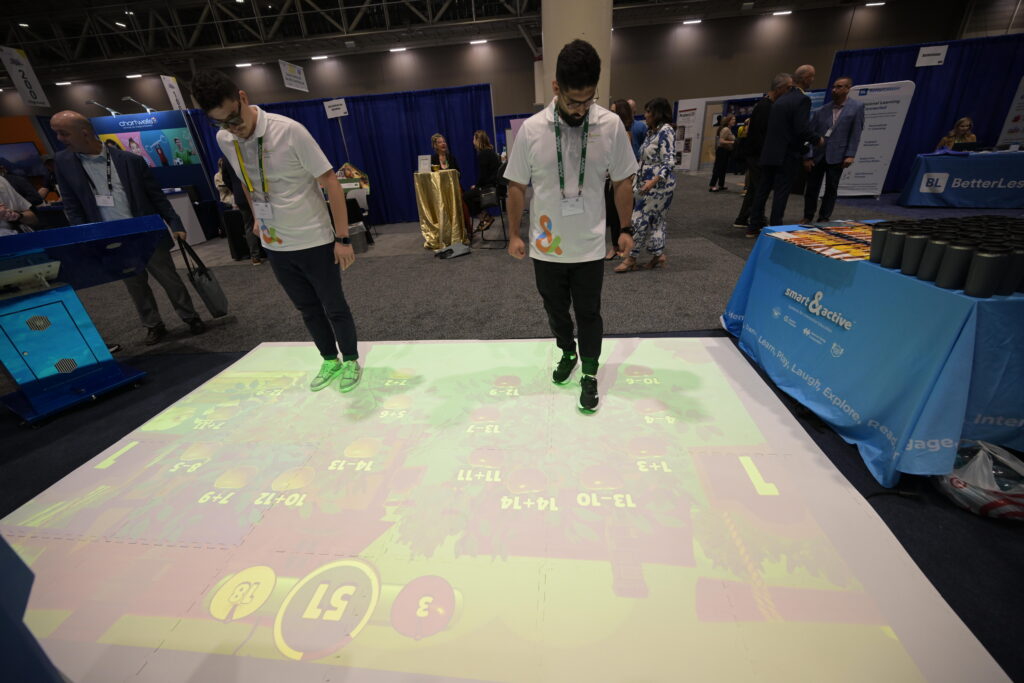In a world where students have cellphones tethered to them and screens play a central role in classrooms, some vendors inside the AASA national conference’s exhibit hall in New Orleans were focused on something a little different — hands-on learning and expressions of fun. And conference-goers were lining up to learn more.
At the Mimbleball booth, exhibitor Julia Chambers stayed busy explaining the backstory behind the flooffy stuffed stress balls on the table in front of her. Chambers’ son, Theo, invented the creations in 2017.
The “hairball with personality,” as they’re described, comes with wide-set eyes and no mouth — offering no judgment. Their wild hair can be styled or fluffed up as a student sees fit. Bopping the Mimbleball on the bottom makes the hair immediately stand straight up, a bit like a troll doll, which elicited a few chuckles and gasps among conference attendees.
They’re perfect for calming a crying student in a principal’s office or a tense moment, Chambers said. “Once they get it into their hands, they start to re-regulate automatically.”
As Chambers touted the Mimbleball’s benefits, John Maldonado, superintendent of Questra Independent School District in Questra, N.M, walked up with a big smile on his face. He bought one last year, and it’s used in a life skills class where students earn the ability to play with it. “It helps the kids get focused,” he said.
Mimbleball wasn’t the only low-tech offering. Bare Books has been around for decades, said Lindsey Meyers, the company’s social media director. And it offers exactly what it sounds like — books of all shapes and sizes with bare pages, along with game boards and other materials. They provide kids with a blank canvas to create their own stories, comics and games.
“It’s just about instilling creativity in kids and to get them to create more things themselves,” Meyers said.
Another conference exhibitor, Crazy 8s Math Club, also goes the low-tech route with hands-on games that teach fundamental math skills to kids in kindergarten through 5th grade. In one activity called “spy training,” kids decode math facts to unlock a secret prize.
“We have been proven to reduce math anxiety, and teachers tell us that translates to success in the classroom,” said Joy Kalfus, Crazy 8s crew chief.
Other booths showcased hands-on learning fun with a digital component.
Harry Cheng, a professor at the University of California, Davis, and director of its Center for Integrated Computing and STEM Education, was eager to talk up Barobo, a math education program he founded with a former graduate student.
With specially designed robots, the system integrates coding and robotics to teach math facts by using real-world tasks. As students tell the robot what to do — move on a physical map from one point to another or draw a shape — they’re learning about X and Y coordinates, angles and other skills, Cheng said.
Using the system, research has found a year-over-year increase in students meeting or exceeding state standards from 16 percent to 71 percent, a 344 percent increase. “Engagement is the key,” Cheng said about the success of the program.
And then there was Smart & Active with its sandbox on steroids — or, in reality, augmented reality. With a built-in computer with a projector and motion sensor, the system displayed in the exhibit hall responds to touch and movement, as the company describes. As students shape the sand, the projection adapts in real-time. When they dig deeper, a projected river appears. When they build higher, a mountain comes to life.
The company creates other interactive systems that can project games on the floor or the wall to get kids physically moving and learning. “They think they are playing, but they are actually learning,” said Usai Niiazi, sales manager.
Brennan Allen, a CTE and STEM teacher with Washington County Schools in Limestone, Tenn., was on hand at the booth to share his own experiences with the products. He said teachers at his school jockey for the Smart & Active offerings he has. “This product truly allows students to engage in learning in kinesthetic ways,” he said.
(Sarah Lindenfeld Hall, a freelance writer in Raleigh, N.C., is a senior editor on AASA’s Conference Daily Online.)


